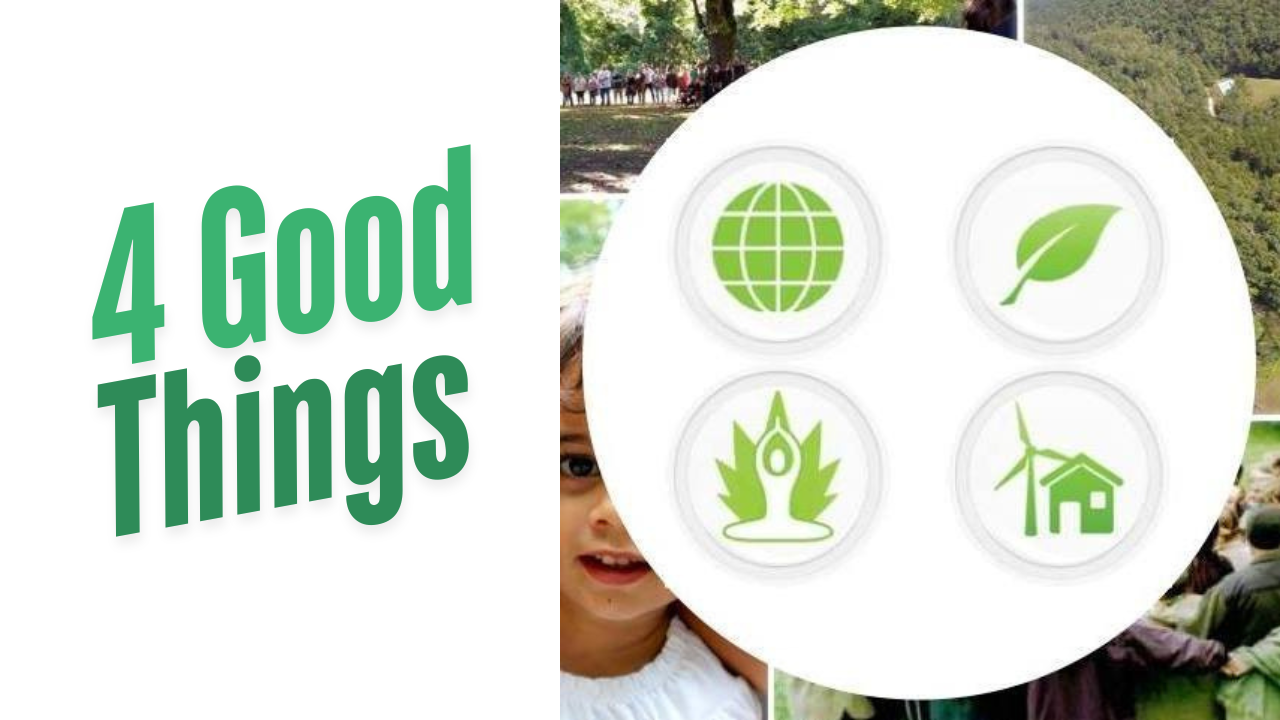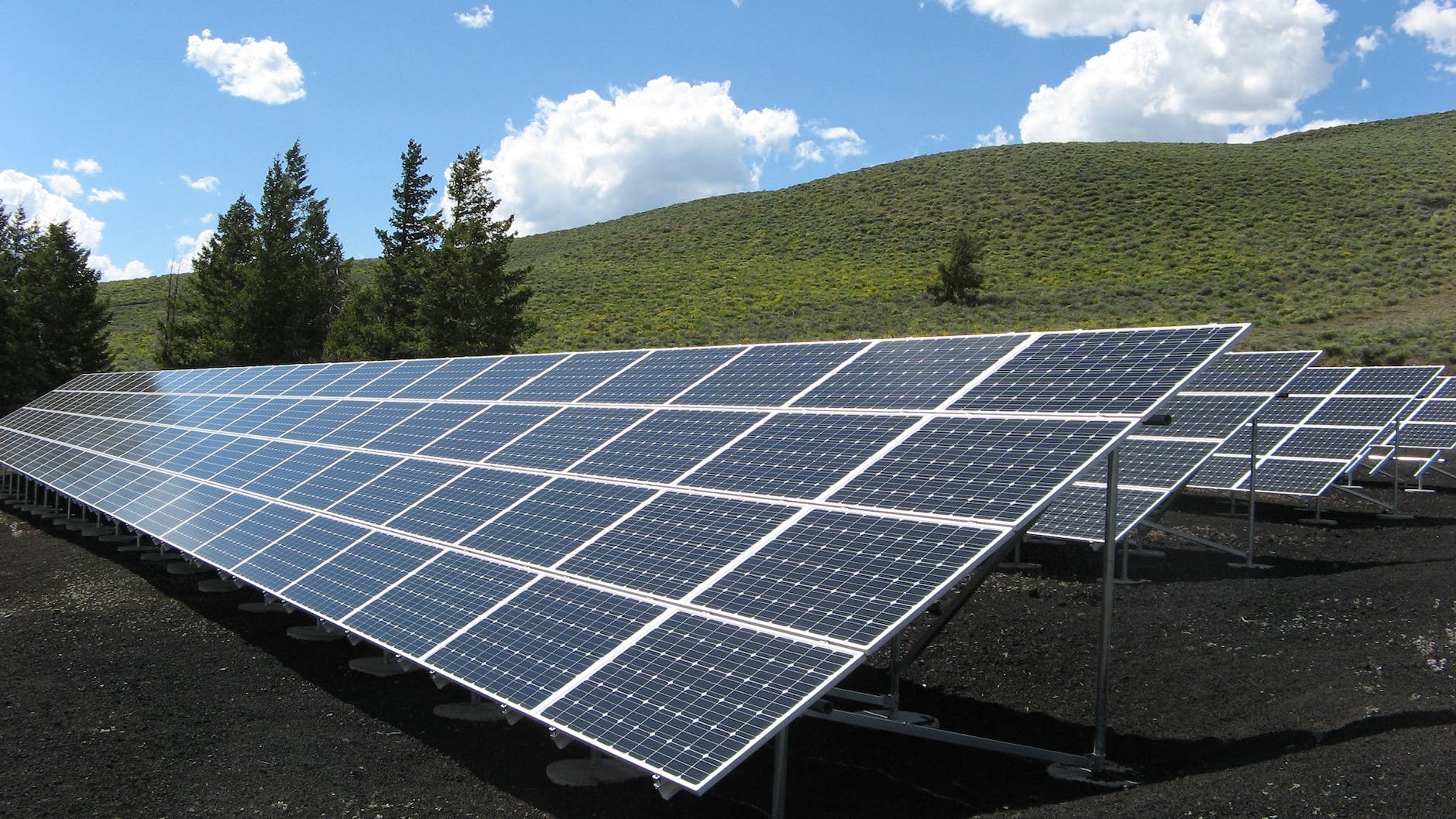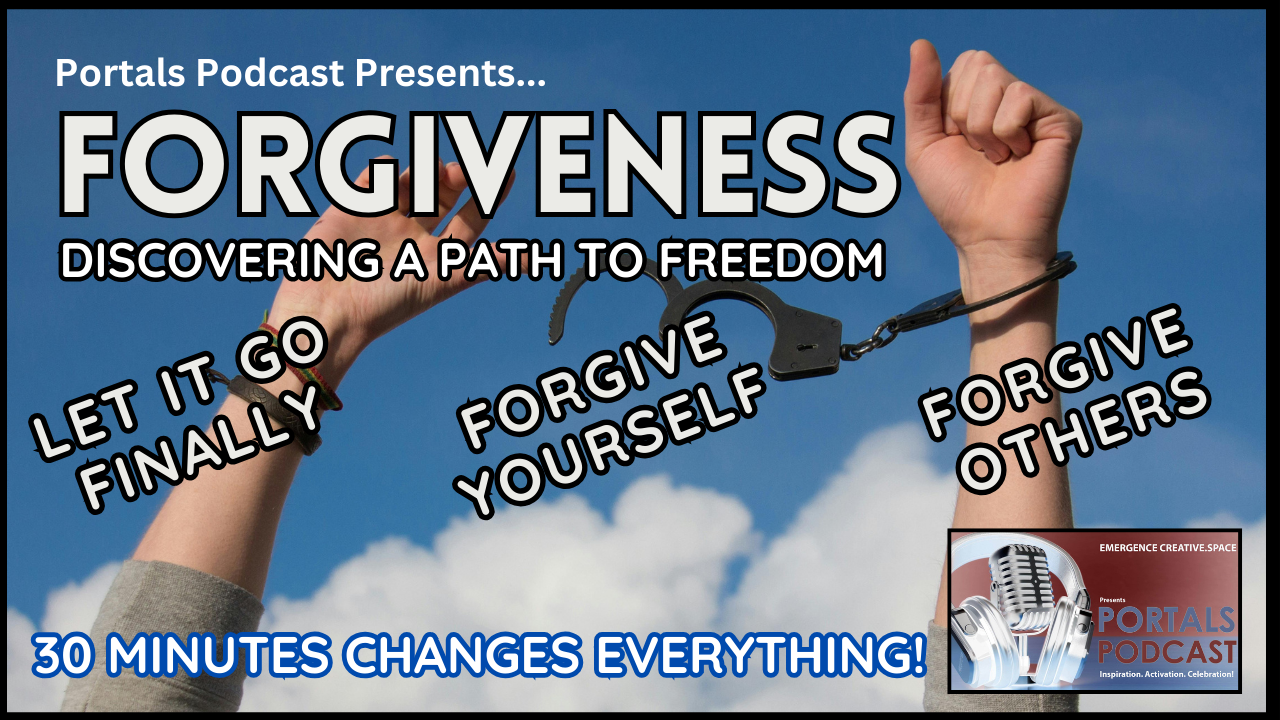
“Four Good Things” Volume 1
Ladies and gentlemen, boys and girls of all ages, I’m happy to share with you now four inspirational news stories. Four Good Things is a new segment for Portal’s podcast. (This article is an edited Transcript from the episode of the same name.)
I want to make sure that in a world where our feeds are polluted with mind-numbing, vibe-destroying news stories,we have a place we can go to check out some good news. Hopefully these stories will brighten your day, maybe even get you excited about things.
So without further delay, I present to you the first of Four Good Things.
#1 of Four Good Things: Business is Booming!
It’s an amazing time to be an independent entrepreneur. Based on the number of small business loan applicants, a record-setting 5.5 million new small businesses were started in the United States in 2023. That’s up 500,000 from 2022.

This most recent increase is exciting because it demonstrates that people today, more than ever, are feeling that it’s their time to become independent and are finding ways to sustain themselves and their family.
Taking a leap into business ownership is scary, and many times it requires learning a whole new set of skills. But the end result is that they are, in most cases, finding career paths that are more closely reflective of their passions and their values. Silver linings come in all shapes and sizes, and this could be considered a silver lining to the COVID-19 pandemic.
The U.S. Chamber of Commerce mentions that the pandemic created circumstances for new businesses to start, citing that the change made individuals turn their ideas and hobbies into businesses that they could run from home. And to me, that’s one of the most beautiful aspects of life, finding solutions.
In essence, we are a solutions-oriented species at our core. Stephen Davis, an economist at the University of Chicago Booth School of Business, said that people are looking for working arrangements that are more suitable for how they want to live their lives.
He said this during a 2022 round-table event, which was hosted by the Economic Innovation Group. What’s really exciting is that more and more women and minorities are stepping into small business ownership roles, as seen by the fact that 49% of new business owners are women.
The Small Business Administration is committed to increasing small-dollar loan funding and in 2023 delivered nearly $90 million in microloans.

A microloan is a loan of $50,000 or less, with 35% of those loans going to Black-owned businesses and 15% going to Latino-owned businesses. It seems that the pandemic acted as a wake-up call for many people, who are now choosing to step away from corporate America.
But it’s more than that. Many people are looking to earn more income while maintaining their current careers. That trend is also on the rise. The Associated Press reported that 44% of new business owners claim that their new businesses are side hustles. This is also up from 27% in 2022.
This is partially due to the fact that there are all kinds of new internet-based business models to choose from. Here are a few interesting facts about small businesses.
Did you know that 99% of American businesses are small businesses? I checked it two times, so that’s accurate. With 33.3 million businesses in the United States as of 2024. Or did you know that small businesses employ 61.7 million people, which is 46% of the entire private sector?
Here’s some more for you. Small businesses are the main source of employment in many industries with 82% of construction workers, 83% of agriculture workers, and 44% of healthcare workers employed by small businesses. Small businesses also generate 32.6% of all exports and pay 39% of all private sector payroll.
If you’d like to find out more information on how to start a small business, or if you would like a free guided tour on how you can become an entrepreneur, look up the SCORE program from the Small Business Administration.
That’s S-C-O-R-E.
They have helped millions of people wrap their heads around all the things you need to do to become an entrepreneur, and it’s as easy as following instructions. I know firsthand that that’s true. I used their models and their forms to get a better understanding of all the things
I needed to do to create the Emergence Theater as a non-profit.
Do you dream of starting a new business? And if you were to open up a small business, what kind of business would it be? What’s keeping you from doing it? Does it seem too daunting, like too much to take on? That’s understandable. If these numbers say anything, it’s that it’s probably not nearly as difficult as we may think it is.
#2: Of Four Good Things: Alternatives to lithium ion batteries.
As humanity slowly makes the global shift towards sustainable solutions in the area of energy generation and consumption, one of the most important technological advancements has come in the area of energy storage. We can generate all the energy we could ever need through any number of alternative means, but with all the advancements in energy collection, the main issue hasn’t been on the supply side. It’s that we are limited in how we can store the energy.
At this point, excess energy generated is pretty much useless unless it can be stored for later use. Energy storage devices, or batteries, as they are called by the cool kids these days, has come a long way in what really has been a short period of time.
Now, I’m not going to get into the full extensive history of batteries, but they were first invented around 1800 and then modernized in a considerable way about 100 years later, 90 to 100 years. And then about 30 years after that, so 1930, they started taking on incredible new faces.
It’s a really interesting story. I suggest you look into it.

Lithium-ion batteries are the most prevalent type of batteries used today. They are used in many portable consumer electronics, such as cell phones, laptops, medical equipment, and power tools as well.
They have a high energy density, a long life cycle, and a low self-discharge rate, making them ideal for applications requiring lightweight and high-performance power sources.
Unfortunately, lithium-ion batteries come with their fair share of issues, some of which are serious causes for alarm.
Safety being one of them.
Lithium is highly reactive and flammable metal. These batteries have a tendency to catch fire or even explode due to a chain reaction known as thermal runaway.

Scarcity.
Lithium is the key component of lithium-ion batteries, but we only have a limited amount of lithium on the planet. Lithium reserves are located far from manufacturing centers, and sadly, many of the parts that make up the lithium-ion battery are found in areas of the world with horrible histories of human rights abuses.
Sustainability.
They require environmentally destructive mining practices for metals such as lithium, cobalt, and nickel. A large amount of these metal resources are located in developing countries, like Dominican Republic of Congo, where ethical mining practices haven’t been established.
Durability.
You may already know that batteries degrade over time. Various chemical and physical stresses reduce the amount of lithium ions in such batteries and reduce their ability to hold to storage.
So it’s important that we find a cheaper, longer-lasting, and more sustainable way to store the energy that we need to continue to push forward on our march towards shutting our addiction to fossil fuels.
Here’s a few of a long list.
Number one, sodium ion batteries. Now, these are really exciting. You can do any search on YouTube. You hear all sorts of ways that this technology is progressing. They simply replaced lithium ions as charge carriers with sodium.

The single change has big impact on the battery production, as sodium is far more abundant than lithium. In fact, you can use salt from the oceans to extract sodium just about anywhere in the world.
Another is a lithium-sodium ion hybrid. And finally, solid state batteries. Not all of the areas of interest in this hunt are newer technologies. Solid State batteries have been around for a long time, and there are plenty of benefits.
Besides the lower risk of ignition, solid state batteries can also hold more energy compared to their lithium ion counterparts. They also charge and release energy quicker, which is much more safe.
It’s exciting to take a closer look at some of the current technological advancements in our pursuit of becoming a more mindful and sustainable global community. It supports the notion that we, the people here on this planet, are turning a corner and truly becoming a more conscious, or thoughtful, if you will, species.
#3 of Four Good Things: Tele-Mental Health.
New studies clearly show the benefit of telemental health for specific segments of population. If you’re like me, then you’ve most likely seen ads for telemental health services like BetterHelp. I remember when I first started seeing those ads, thinking that it seemed a little strange.
I have a bit of resistance to some kinds of technology. If I’m being honest here, and to put this into perspective, I didn’t even get a smartphone until years after they were first introduced. And once I did have one, I didn’t ever use it for GPS mapping, because I was certain it was destroying my sense of direction, that I would somehow become dependent on it and not know how to get around without it.
So I couldn’t get away from the feeling that it was just another step away from the personal human interaction. I felt that a part of the current mental health crisis came from not interacting with enough people in our day-to-day.

From this point forward, so I don’t have to keep saying the words telemental health a thousand times in this script, I’m going to abbreviate it to TMH. To clarify, TMH refers to a form of mental health care that is accessible through means such as text messaging and chat functions, but most commonly refers to telephone calls and video calls, which are central to telemental health care, or TMH care.
Recently, though, I’ve come across information that has opened my eyes to the benefits of TMH. Positive outcomes and experiences have been recorded across a range of populations and settings.
Encouraging evidence on the accessibility and effectiveness from pre-pandemic research shows how even before the pandemic, TMH was reaching more people and thus the benefits were starting to be recorded. But it was during the COVID-19 pandemic that the use of telemental health around the world greatly accelerated, and the TMH Healthcare became a routine approach to maintaining and delivering mental health services.
Telemental health initiatives were worked into the budget and were central to delivering mental health services in that time of crisis. There’s no telling just how much of an impact TMH had during this time,
but polls and charts seem to indicate that for a good number of people who are isolated and going through mental health crises, it literally saved lives.
Some evidence has suggested that TMH modalities, such as video conferencing, are equivalent to or better than face-to-face modalities for some service users in terms of quality of care, reliability of clinical assessments, and adherence to their treatment plans.

High levels of acceptance and satisfaction with TMH services have also been reported in certain populations, including those with physical mobility issues, social anxiety, or severe anxiety disorders. This news inspires celebration by many dedicated caregivers because the end result is that TMH has helped more and more users have positive treatment outcomes.
For many, seeking mental health care can feel daunting, particularly to those with transportation issues or work schedules or have modality challenges. Even childcare concern can be a roadblock for some. This removes the hurdles, allowing you to connect with licensed therapists virtually, be it through video chat, phone calls, or secure messaging platforms.
This flexibility empowers you to prioritize your well-being regardless of external circumstances, but the benefits go beyond convenience. The technology itself can also be a powerful tool. Therapists can utilize online resources, interactive exercises, and even mindfulness apps to enhance your sessions.
As I have mentioned a couple times now, mental health care is not a one-size-fits-all situation, and TMH is not a replacement for traditional in-person therapy, but it’s a powerful complement. It’s a lifeline to those who might otherwise struggle to access care. It’s a space where the stigma surrounding mental health care can fade and be replaced by empowerment and self-care. So, if you’ve been considering prioritizing your mental wellness, embrace the possibilities of TMH.
It’s a chance to take control of your journey. Remember, seeking help is a sign of strength. And with tele-mental health bridging the gap, the path to a healthier you is now more accessible than ever. It’s amazing to think that this is just one more example of how humanity can adapt and adjust to incredible situations, such as the pandemic. It reminds us that we continue to grow and progress, even in the most dire of situations. And actually, these moments tend to be the space where our most important advancements are made.
Now, you may be wondering, same thing I was wondering, do telemental health organizations accept insurance?
And the answer is, some do, some don’t. Look into it, and I’m sure you’ll find one that matches your needs.
#4 of Four Good Things: Land Banks, transforming communities one vacant lot at a time.
Land banks might not sound exciting, but they’re quietly becoming superstars in community development.
Land banks are public or non-profit entities that tackle a big problem. Vacant land, abandoned land, and blighted properties. Often eyesores, these properties drag down entire neighborhoods, decreasing property value and increasing crime.
This is where the story of Land Banks gets exciting.

It’s a pretty simple process to acquire these properties, The Land Banks themselves get these opportunities, often through tax foreclosure, and then the magic happens. Instead of simply reselling them, land banks act as stewards. They clean up the properties, address safety hazards, and sometimes even demolish structures that are beyond repair. This immediate facelift makes a big difference in the neighborhoods. But land banks don’t stop there.
The Land Banks with communities to figure out the best use of each property. The possible uses of these parcels of land are unlimited. Maybe it becomes a park, a community garden, or even a spot for much needed affordable housing. Land banks often prioritize responsible buyers committed to revitalization and not just a quick buck.
The benefits are undeniable. Increased property values? Check. Safer neighborhoods? Absolutely. A renewed sense of community pride? Indeed.
Land banks are like dominoes. A positive change in one property can ripple outwards, sparking a wave of improvement. Think beyond aesthetics. Land banks can be economic engines, too. They create jobs through renovation and restoration. Plus, they generate tax revenue that can be reinvested in the community.
While the specifics can vary by location, here’s a general roadmap for buying a house from a land bank.
Research and find your ideal property. Look for your local land bank’s website. Many have searchable databases of available properties.

Get financially ready – land bank houses are often priced affordably but they usuallyrequire significant rehab secure finances for both purchase and renovation okay then you apply.
Develop your plan – fill out the land bank’s application and outline your renovation plan. This typically includes details on the work that is needed, estimated costs, and a timeline for achieving your goals. Be prepared to demonstrate your ability to complete the project financially.
Wait for approval – The land bank will review your application and plan. This can take time, so be patient. And when once approved, you finalize the purchase agreement and secure the property. Renovate and revitalize. With the land bank’s blessing, it’s time to roll up your sleeves and bring your renovation plants to life.
All right, and I think that just about does it for this installment of Four Good Things. If you have any suggestions or recommendations on topics we should cover, please don’t hesitate to reach out and let us know. You can find us at www.emergencecreative.space/contact and we’ll let you know if and when we cover that topic.


